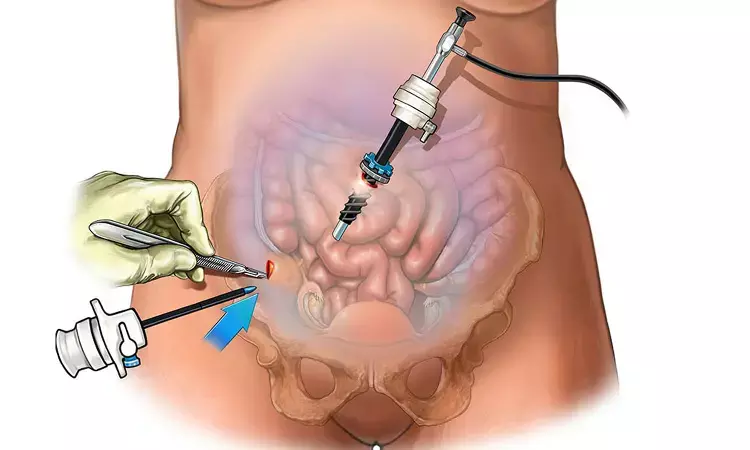- Home
- Medical news & Guidelines
- Anesthesiology
- Cardiology and CTVS
- Critical Care
- Dentistry
- Dermatology
- Diabetes and Endocrinology
- ENT
- Gastroenterology
- Medicine
- Nephrology
- Neurology
- Obstretics-Gynaecology
- Oncology
- Ophthalmology
- Orthopaedics
- Pediatrics-Neonatology
- Psychiatry
- Pulmonology
- Radiology
- Surgery
- Urology
- Laboratory Medicine
- Diet
- Nursing
- Paramedical
- Physiotherapy
- Health news
- Fact Check
- Bone Health Fact Check
- Brain Health Fact Check
- Cancer Related Fact Check
- Child Care Fact Check
- Dental and oral health fact check
- Diabetes and metabolic health fact check
- Diet and Nutrition Fact Check
- Eye and ENT Care Fact Check
- Fitness fact check
- Gut health fact check
- Heart health fact check
- Kidney health fact check
- Medical education fact check
- Men's health fact check
- Respiratory fact check
- Skin and hair care fact check
- Vaccine and Immunization fact check
- Women's health fact check
- AYUSH
- State News
- Andaman and Nicobar Islands
- Andhra Pradesh
- Arunachal Pradesh
- Assam
- Bihar
- Chandigarh
- Chattisgarh
- Dadra and Nagar Haveli
- Daman and Diu
- Delhi
- Goa
- Gujarat
- Haryana
- Himachal Pradesh
- Jammu & Kashmir
- Jharkhand
- Karnataka
- Kerala
- Ladakh
- Lakshadweep
- Madhya Pradesh
- Maharashtra
- Manipur
- Meghalaya
- Mizoram
- Nagaland
- Odisha
- Puducherry
- Punjab
- Rajasthan
- Sikkim
- Tamil Nadu
- Telangana
- Tripura
- Uttar Pradesh
- Uttrakhand
- West Bengal
- Medical Education
- Industry
Laparoscopic repair using nonperfusion hysteroscopy tied to precise and complete resection of cesarean scar defect

Yusuke Sako and team carried out Technical video introducing laparoscopic scar repair using nonperfusion hysteroscopy for patients with a CSD at a Tertiary referral facility for gynecology to demonstrate a 5-step approach to accurately identify the extent of resection of a cesarean scar defect (CSD) and perform excision and repair of the lesion.
A 33-year-old woman who underwent intrauterine insemination for secondary infertility 3 times but did not conceive complained of repeated irregular bleeding caused by a CSD during infertility treatment was taken as subject.
The video presents a systematic 5-step approach to laparoscopic repair of a CSD.
Step 1: the lesion was coagulated and marked using a hysteroscope.
Step 2: the lesion was thinned by cutting it using the hysteroscope.
Step 3: after laparoscopic dissection of the bladder from the lower uterine segment and turning off the laparoscope's light source, the thinned lesion could be identified using light from the hysteroscope.
Step 4: an incision was made at the lit-up point from the abdominal cavity side using an ultrasonic coagulation incision device to access the uterus.
Step 5: once the uterine lumen was reached, reflux from the hysteroscope was stopped.
Intraperitoneal insufflation gas then flowed into the uterus through the uterine wall perforation, and the lesion could be observed without the use of a reflux fluid. This technique is called nonperfusion hysteroscopy. By observing the marked lesion using nonperfusion hysteroscopy, it could be resected laparoscopically along the appropriate incision line.
Advantage of performing 5 successive surgical steps to completely resect a CSD using laparoscopic repair and resolve the patient's symptoms was the main objective. Laparoscopic repair using nonperfusion hysteroscopy allowed recognition of the upper and lower edges of the lesion from the abdominal cavity side.
The combined use of nonperfusion hysteroscopy allows observation of the uterine lumen without the use of a reflux fluid because pneumoperitoneum gas fills the uterine lumen. Intraoperative monitoring using a hysteroscope and laparoscope allows visualization of the lesion site from both sides while resection is being performed. This 5-step procedure permited precise identification of the lesion area, complete removal of lesions, and prevention of excessive resection that may reduce uterine function and increase perinatal risk.
Source: Yusuke Sako, Tetsuya Hirata and Mikio Momoeda; Fertility Sterility 2022
MBBS, MD Obstetrics and Gynecology
Dr Nirali Kapoor has completed her MBBS from GMC Jamnagar and MD Obstetrics and Gynecology from AIIMS Rishikesh. She underwent training in trauma/emergency medicine non academic residency in AIIMS Delhi for an year after her MBBS. Post her MD, she has joined in a Multispeciality hospital in Amritsar. She is actively involved in cases concerning fetal medicine, infertility and minimal invasive procedures as well as research activities involved around the fields of interest.
Dr Kamal Kant Kohli-MBBS, DTCD- a chest specialist with more than 30 years of practice and a flair for writing clinical articles, Dr Kamal Kant Kohli joined Medical Dialogues as a Chief Editor of Medical News. Besides writing articles, as an editor, he proofreads and verifies all the medical content published on Medical Dialogues including those coming from journals, studies,medical conferences,guidelines etc. Email: drkohli@medicaldialogues.in. Contact no. 011-43720751


